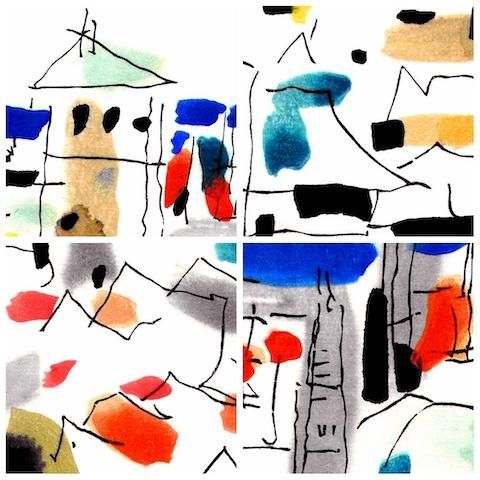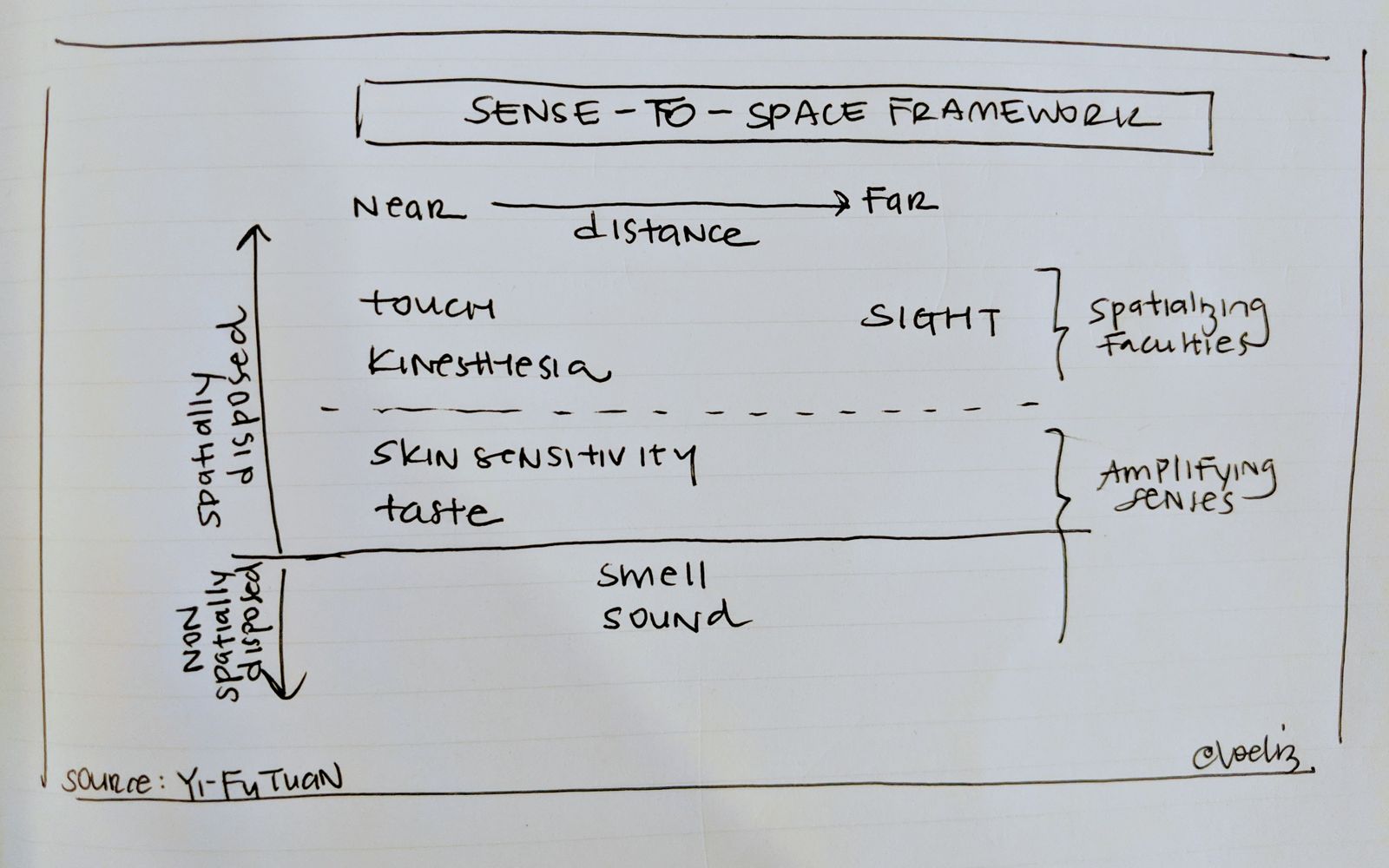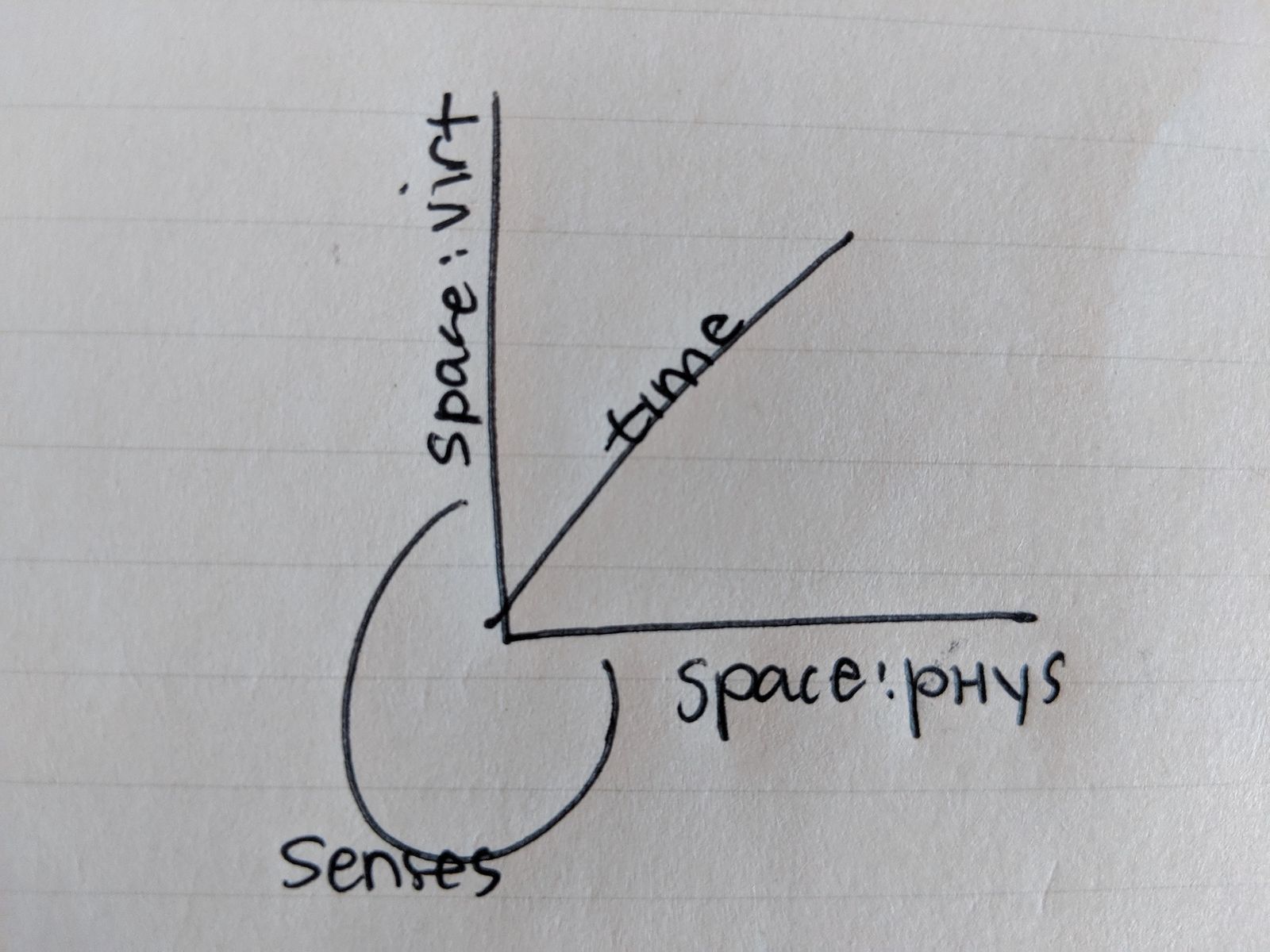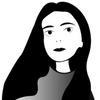New ways of distributed work: By the senses

Attention
“We rarely attend to what we know.”
That’s what urban geographer Yi-Fu Tuan writes in his book Space and Place. It’s a refrain that stays with me.
Everywhere I go these days, I see and hear comments and questions on the time and space of flows and how we orient ourselves (and our families) within changing pace layers of communication systems.
We all know the same thing, and yet we don’t know how to make sense of it.
Whether you’re a new mother weighing your career in Manhattan vs a more manageable lifestyle in Philadelphia, to my new colleagues based across Africa in remote software development (oftentimes leaving family at home to move to a city with better internet infrastructure), to my former teacher in central China, providing for her family selling products via mobile e-commerce one half of the week, and offering online Chinese courses the rest…
We are encountering phenomenal new ways of distributed work.
Why the focus on work? Because it’s the clearest example of human coordination; a force that causes movement. “Work” is what we spend our time on— be it personal, spiritual, or coordinational (and ultimately— economical)— as we move forward in this world. (This is a great reason why “What do you spend your time on?” is a better substitute for “What do you do for work?”)
Work is W=Fd, where d = distance (displacement). Not only is it what we spend our individual and collective time on, but our work is increasingly spread out across timezones as a measure of distance, and global teams means greater literal distance, too.
So how do we connect these distanced places of work? Where and how we work creates new worlds, both personalized and shared. “World” suggests spatial structure, as Yi-Fu Tuan writes. The spatializing of place matters, and thus our experience with respect to space does too.
What sensory organs and experiences enable human beings to have their strong feeling for space and for spatial qualities? Answer: touch, kinesthesia, and sight.Taste, smell, skin sensitivity, and hearing cannot individually (nor perhaps even together) make us aware of a spacious external world inhabited by objects. In combination with the “spatializing” faculties of sight and touch, however, these essentially non distancing senses greatly enrich our apprehension of the world’s spatial and geometrical character.Yi-Fu Tuan
I agree with YFT that the greatest way to spatialize place is through touch, kinesthesia, and sight.
Sex is the ultimate touch experience. From locations to points, “what begins as undifferentiated space ends as a single-object situation or place”… the expansion of space until contiguity is reached.
We grasp kinesthesia in our awareness of changing space and direction, from the stretching of limbs and the spaciousness that conveys, to a sense of direction and area travelled while on meditative walks or conversational runs.
And from sight— embodied in masterful painting, visceral photography, or a romantic evening watching the sun set over the horizon— we attain our sense of distanced layers, our ability to plan, and our anticipation of future possibility.
Thinking back to my earlier question: So how do we connect distanced places of work?… When it comes to our ability to spatialize and coordinate across distances, the strongest tool we have is based on sight. And these days, that ability to interact via SIGHT across distributed, virtual worlds is becoming more and more on par with the real world.
(Cue: Zoom)
BUT REMEMBER!
We rarely attend to what we know. There is so, so much more to be discovered when it comes to better work across distributed worlds. Tools like Zoom are just the start.
One place to start with this further discovery is through the sense-to-space framework shown here:

Sight is the ultimate distance receptor, conveying and processing significant information. While smell and sound can evoke distance too, they are less spatially disposed. Touch, kinesthesia, skin sensitivity, and taste: these all occupy the more “immediate” receptor column. While spatially disposed, they lack in distance… except for time horizons; the memories of these senses can be long lasting.
How is this sense-to-space framework useful? It helps us evaluate new measures for greater spatial organization.
According to Yi-Fu Tuan, spatial organization is mythical, pragmatic, and abstracted. These are not mutually exclusive. Mythical space is conceptual schema: the “unperceived field is every man’s irreducible mythical space, the fuzzy ambience of the known which gives man confidence in the known.” This is the space I turn to in my dreams. Fidelity might be low, but that doesn’t mean uncertainty is low. Pragmatic space incorporates and organizes practical activities: good soil here, bad soil there. Clean water here, dirty water there. Private area here, public area there. And; Abstracted spatial organization relies on symbol making to communicate and provide greater context to locations and points. This abstraction ultimately spurs our use of maps to convey knowledge across a combination of senses.
Taken together, this spatial organization creates new opportunities to explore and understand our worlds.
WHY THIS MATTERS

How does the virtual change the sense-to-space framework? Does virtual allow senses to be better spatially disposed… like sound?
New collaboration technologies based on sight (like Zoom) enable greater interaction across distance. I’ve caught myself now multiple times forgetting if I had actually met someone in person before, when really we had just logged multiple hours on Zoom together! And yet, in-person experience is so much more powerful. An in-person meeting delivers huge returns to further collaboration. While this is something we all know, can we quantify it? (Do we even need to?)
There is still much to be desired with sight collab tech:
- What about just off screen? [SENSE] Oftentimes, what gives us meaning is what we detect out of the corner of our eye. Whereas the mythical understanding gives us comfort in the uncertainty, as described above… we haven’t yet established this “fuzzy ambience of the known” yet for videoconferencing.
- Scope is compressed. [SENSE] What might be missing with the lack of sense of timezones or distance between participants? (This might not be a bad thing though…)
- Lack of corporeal control. [CONTROL] “A tool or machine enlarges a person’s world when he feels it to be a direct extension of his corporeal powers” -YFT. Participants currently lack this corporeal power.
- There’s no ability to probe shared space. [CONTROL] In distributed work, our worlds are spatially separated. In the same way that shared (simultaneous) time varies from asynchronous time, how might shared space vary from separated space?
- Sight is just one sense; what about amplification from the others? [SENSE & CONTROL] Sight is just one of the senses; how might we incorporate the other spatially disposed senses (touch, kinesthesia, taste, skin sensitivity) as well as the non-spatially disposed (smell, sound)?
Given all that is lacking, there is great possibility for new ways to interact with new tools:
- There is an open role for mythical, pragmatic, abstracted spatial organization.
- There is opportunity to give greater power to users, to explore and probe shared space.
- There are a multitude of ways to still amplify our other senses.
POSSIBILITIES
When considering new ways of work, it’s easy to jump to: we just need better software collab tools, or new use cases for AR/VR. But I think that’s missing the bigger picture.
We don’t attend to what we know.
The bigger questions are: How and why do these tools matter to us? Which senses are MISSING, still today? How could we rely on our range of perception to further discover *new* tools? How might these (virtual) tools engage with the physical space around us for even greater impact? And in turn— what policies would support the choice and control of when, where, and how we work?
I see a world where new tools & policies allow us to explore and understand the mythical, pragmatic, and abstracted spaces of ourselves and our colleagues. Where we can utilize additional senses, in combinatorics for enhanced perception. If I know the “fuzzy ambience” of where you work, even without personally visiting, might we coordinate better? For all the connected logic that we are creating in the overlay, let’s bring that back to the physical space of our built environment– for cyclical benefit. Through high frequency, active participation, not only will we be able to maintain our collective interactions within a space, but the infrastructure of the space as well.
AND BEYOND
What would it be like to work on an 8-hour walk? Or have constructive one-on-ones while dancing through a simple maze? Do we work better by moving to new locales in a cyclical pattern throughout the day? Could we leverage our sense of touch to share physical books across distributed libraries? How might we use skin sensitivity to communicate constructive feedback?
These are just my ideas, drawn out from this sense-to-space framework. But I’m curious to know: what are YOUR ideas?
There’s still more to attend to, of what we know.
NOTES
- While not directly quoted, ideas here are also strongly influenced by The Hidden Dimension by Ed Hall. It is clear that YFT also draws heavily from Hall.
- And what about when you apply this sense-to-space framework to “perceptual AI”? As AI now has acquired sight (and touch, sound, kinesthesia, and “skin” sensitivity) through our smartphones… how does this impact the spatializing faculties of AI?
- Undiscussed: While I refer to “work” as knowledge work here— how might this apply to different kinds of work?
